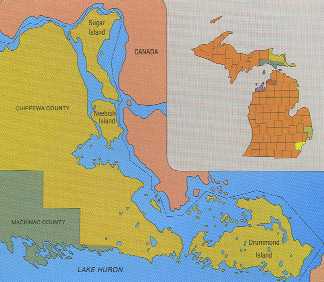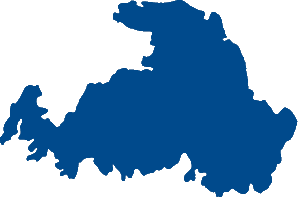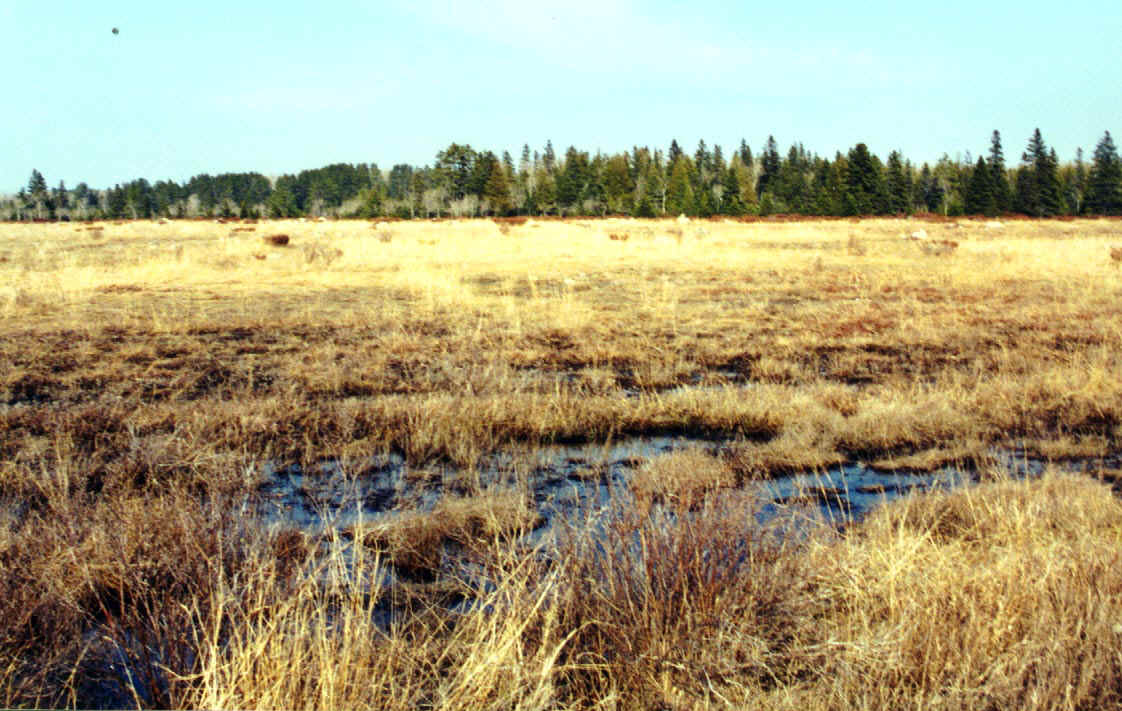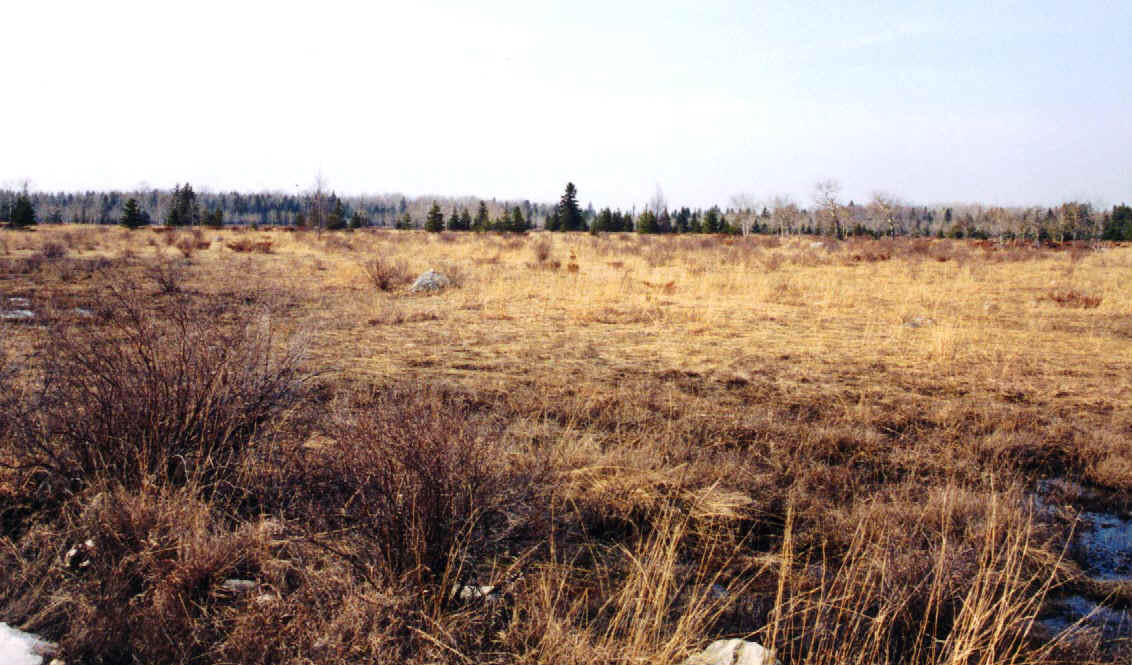THE MAXTON PLAINS
The Maxton Plains are a flat, ice-scraped landscape on Drummond Island.

Click here for full size image (361 kb)
These plains are very flat, have a very thin or a nonexistent soil cover, and are covered with a rare plant community known as Alvar Grasslands. The plains lie atop the Niagara cuesta, a resistant landform of dolomite bedrock. They have been scraped clean by repeated ice advances.
DRUMMOND ISLAND

The images below show nicely the flat landscape of the Maxton Plains.

The Maxton Plains is distinguished by the unique grasslands, called alvars, a rare
limestone bedrock plant community that exists only in portions of Canada, the United
States and Sweden. An alvar is a wet natural community which grows in a layer of thin soil
atop limestone bedrock. The alvars found on Drummond Island are among the largest
remaining high quality alvars in North America, and are owned mostly by the Nature Conservancy.
Alvars are the most globally unique natural community in the Northern
Lake Huron region. Alvars are a type of grassland that occur at and near the shoreline in
areas where bedrock flats of limestone and shale are at the surface. Soils are thin or
nonexistent. Alvar is rare worldwide, found only in Canada, Baltic Sea coasts in
Scandinavia and the United States. The Maxton Plains alvars on Drummond Island are one of
the largest, highest quality alvars in the world. Narrow bonds of diver communities open
occur along the rocky shorelines. The plains are dominated by boreal and prairie plants.
Boreal species include bulrush sedge and ragwort while prairie species include prairie
dropseed, prairie smoke, and Indian paintbrush.

The Maxton Plains rests on limestone and dolomite bedrock. When the last Wisconsin glacier
retreated some 10,000 years ago, little or no glacial debris was left in the area,
resulting in thin soils and bare expanses of bedrock. The bedrock is irregularly
cross-hatched by fractures, which collect the thin soils and hold moisture. As a result,
grasses grow -- along these fracture lines.
Because the bedrock is so close to the surface (or is at the surface)
grassland plants endure extremes in seasonal moisture.
During the spring, the bedrock keeps snowmelt and rain near the surface,making it somewhat
soggy. During the summers, the
shallow soils dry out quickly and plants sear. These extremes drive the ecology of the
alvars, keeping water-loving trees at bay,
while maintaining grasses that withstand summer droughts. Boreal species (such as bulrush
sedge) favor the cooler, moister
conditions of spring, while the Great Plains prairie species (prairie dropseed, and
prairie smoke) wait to flower during the summer.
In the image below, note the many rocks still lying on the surface--what soil IS left on
the Plains is very rocky and thin!

This material has been compiled for educational use only, and may not be reproduced without permission. One copy may be printed for personal use. Please contact Randall Schaetzl (soils@msu.edu) for more information or permissions.